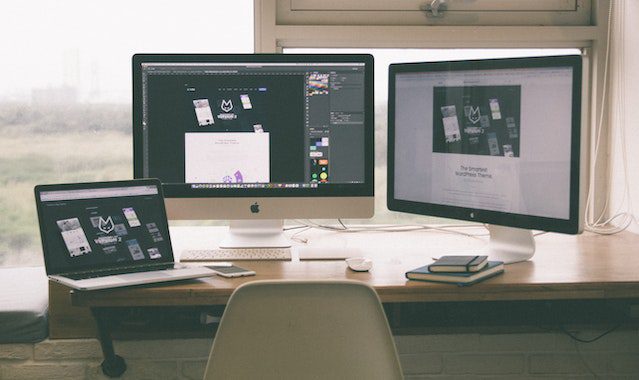
In today’s competitive digital market, UX and UI design have emerged as a crucial competitive edge for business. To create an excellent UX design, several designers should consider these elements, such as their usefulness, usability, and aesthetics.
Design consistency is a crucial UX design process in designing an enjoyable and seamless user experience. However, these days, consistency has been overlooked by designers.
Let’s explore the importance of consistency in UX and UI design and its benefits. We’ll also include some apps you can use.
The importance of design consistency
The concept of consistency in user interface and user experience design is more complex than it appears. Establishing a comprehensive and intentional method in designing your website is crucial to ensure consistency.
By incorporating consistency into your design, individuals can readily comprehend new contexts without experiencing any difficulty or perplexity.
Consistency across contexts is crucial for keeping the user’s attention on the job rather than figuring out the UI. A more positive user experience is fueled by consistency because it fosters a balanced feeling of protection.
Types of Consistency
The following are some examples of design consistency that people appreciate:
Visual Consistency
Visual consistency is achieved using similar visual components, improving the product’s learnability.
The design elements of products such as business cards, security deposits, calendars, and more—fonts, fonts, labels, measurements, and naming conventions must be consistent.
Colors, pictures, typefaces, whitespaces, forms, and proportions are just a few of the components that need attention.
External Consistency
Consistency in appearance across different systems, goods, and branding mediums is what we mean when discussing external consistency. As long as the products are similar, the user’s prior experience is transferable. This style of uniformity reduces confusion and improves usability for the end user.
Internal Consistency
By incorporating visual and functional consistency into the design process, you may improve the product’s usability and the learnability of its interface.
The Benefits of Consistency
Saves time and cost
User interface conflicts between the designers and stakeholders are reduced when consistent designs are fully developed using predefined components primarily.
Adopting a consistent approach to design helps standardize processes, reduces the need for iterative design changes, and alleviates unneeded costs.
Get rid of confusion.
User interface consistency promotes effective communication. Employ visual consistency to emphasize significant portions of content, facilitate navigation, or establish priority. By establishing a logical structure and specifying where users can locate particular information, you can ensure users are clear and confident.
Increased usability
The more consistent your software is, the less your customers will have to learn to utilize it. They have either seen it before in your app or have learned it elsewhere. It will help your users feel satisfied and motivated to use your software.
Improves User Experience
Consistency is crucial when designing a seamless user experience. Users are more invested in an app or website and accomplish their goals when they can anticipate what will happen next and navigate it easily.
Builds Trust
Users are more likely to trust a consistent service or product because it conveys an air of dependability and professionalism. It shows people that the product was made with care and attention to detail, a message they want to hear.
5 UI and UX Design Tools For Designers
These tools can help you plan the framework of the information design and how a person will move through the experience.
Axure Tool
Axure is an excellent UX and UI design tool when creating wireframes and prototypes. Its intuitive design makes it easy to monitor the workflow and stay on top of things. It is perfect for technical and large UI and UX projects.
Axure is often used by businesses looking for project management software with a high degree of functionality and excellent visual elements.
Craft Tool
Craft is an InVision tool that lets you simultaneously work on something else as on other tools. It has a feature which keeps your daily work up to date. Craft has this function, saving time and everything else you need for your testing. Anyone can work and edit the project since the design and editing types and other minimal changes are made and shared.
Adobe XD Tool
Adobe dominates design tools in the cloud. It features vector-based UI tools for producing prototypes with a familiar Adobe UI. This real-time collaboration makes it popular among UI designers.
In addition, Adobe XD provides designers with everything they want to quickly and easily create, which includes interactive aspects. It’s also the design environment where many fields of study may be seamlessly integrated.
Figma Tool
Figma can create live photo types and models that designers can test to check if the design is helpful and track all the progress.
It allows multiple users to create edits on the same project and let them see who opens it so they can do their work daily. It can also show who’s working currently and what they’re doing.
FlowMapp Tool
The designers should consider the structure, flow, and related site maps while developing an experience plan. FlowMapp is a tool that focuses only on user experience design, unlike many others that aim to mix user interface and user experience into a single platform.
Final Thoughts
The concept of consistency in UX design allows for flexibility but not complete disregard. The presence of visually and functionally consistent user interface (UI) and user experience (UX) components is advantageous for designers and users.
The integration of flexibility and creativity, along with responsiveness and consistency of UX and UI design, dramatically enhances user experiences.
AUTHOR:
Jennysis Lajom is an IT graduate and a former chemist. Her passion for digital marketing led her to a
career in graphic design, editing, and social media marketing. She is also one of the resident SEO writers from Softvire, a leading IT distributor. Follow her at the Softvire Software Store now!








